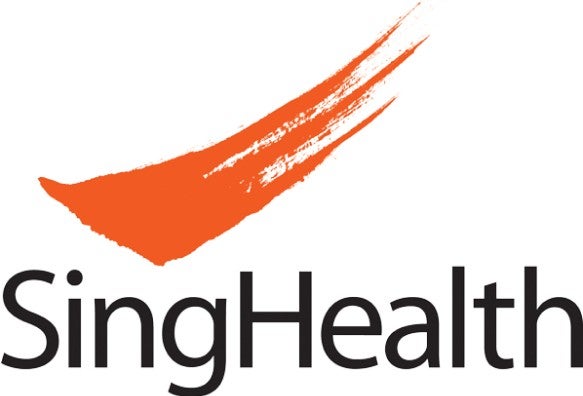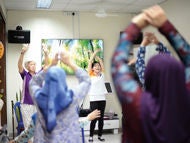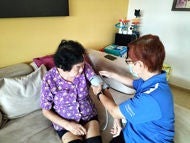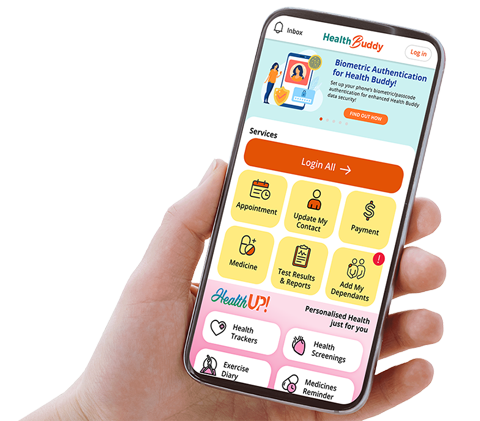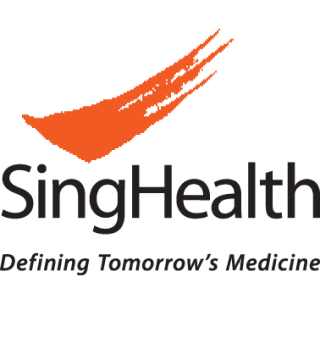- Mission I’mPossible 2 (MIP2), a pilot launched in 2022 by Lien Foundation, PAP Community Foundation Sparkletots Preschool (PCFSP), and KK Women’s and Children’s Hospital (KKH), covered 3,500 children at 16 PCFSP preschools.
- Over 250 early childhood educators were trained to surveil and monitor students for growth, oral health, and development.
- The MIP2 system of surveillance and screening effectively identifies children who may need additional support. Of the children identified to need further screening for development, 90% were found to have at least a mild level of support needs using standardised tools.
- Plans are underway to introduce MIP2 at more PCFSPs, as well as 2 additional preschool Anchor Operators over the next 3 years.
Singapore, 16 October 2025 - Ella1 was enrolled as an 18-month-old playgroup (PG) student at a PCFSP at Punggol in October 2022. After a few months, as part of routine monitoring based on a surveillance checklist developed by MIP2, educators noted that compared to her peers, Ella was not communicating verbally and played alone. While Ella was able to follow instructions, she was unable to express her needs verbally. Typically, such behaviours may have been attributed to her young age and gone unidentified until they worsen. However, under the MIP2 service model and the guidance of the School Child Development Unit (SCDU), Ella was identified to be at risk and require low levels of support for developmental needs based on the MIP2 service model.
Ella’s educators, who were trained, began to implement targeted strategies to stimulate her language development in the classroom. In addition, Ella’s mother was invited to a Parent’s Circle of Support communication workshop where she was introduced to different approaches that could better support Ella’s communication development at home.
Through consistent strategies implemented both in the classroom and at home, Ella began to make marked progress. Now in N2, Ella is able to speak in sentences, not only to make requests, but also to comment and share her thoughts spontaneously. For example, Ella exclaimed one day, “Teacher Gail¹, look! The sky is dark. It's going to rain.” When the teacher reassured her and said, “It’s okay, we can use an umbrella,” Ella responded pensively, “I don’t have umbrella.”
“Currently, developmental surveillance and screening for PCF Sparkletots preschools begins at K1 via our in-house Learning Support Educators. Extending this to start earlier offers a greater window to provide meaningful support for children and their families. This shift in creating a system is transformative, recognising that early childhood is a pivotal period for development and the establishment of lifelong habits,” said Dr Honey Ng, Director of Inclusive Education Division, PCF Sparkletots, which is Singapore’s largest preschool operator with about 350 preschools.
The Need for Earlier Detection and Improved Accessibility to Right-Sited Care
Every year, almost 7,000 children present with developmental needs in Singapore2, ranging from mild to severe. Although each child’s needs are different, there is a common factor in their journey: The challenges caused by their developmental needs must have manifested sufficiently to become noticeable to their caregivers - parents and preschool educators who spend a significant amount of time with children. Hence, it is imperative for educators to be trained to surveil and monitor children with developmental needs as early as possible.
A cluster of 16 preschools in Sengkang and Punggol have been piloting a new service model named Mission I’mPossible 2 (MIP2) since May 2022 to do just this.
"By embedding a systematic surveillance framework within preschool settings from early infancy, we are identifying needs sooner, and fundamentally shifting from reactive to proactive to preventive healthcare. MIP2 begins with universal surveillance right from preschool enrolment, to identify children at risk or with developmental needs to be better supported in class by their educators, as well as those needing more attention to be given effective access or transition to systems for physical and developmental health," said Associate Professor Chan Yoke Hwee, Chairman, Medical Board, KKH and Programme Director of MIP2.
Co-designed by Lien Foundation, PAP Community Foundation Sparkletots Preschool (PCFSP), and KK Women’s and Children’s Hospital (KKH), Mission I’mPossible 2 (MIP2) builds on the progress made by an earlier programme a decade ago, Mission I’mPossible (MIP1) that supported children in K1 & K2. MIP1 has since been adopted by the government and renamed the Development Support-Learning Support (DS-LS) Programme.
In MIP2, early childhood educators are led by a School Child Development Unit (SCDU), and render support to children from as young as 2 months old in infant care classes, through the preschool years. Supported by a consultancy team from KKH, the SCDU comprises an inter-disciplinary team of healthcare and early childhood education specialists — nurse, nutritionist, speech and language therapist, occupational therapist, educational psychologist, curriculum specialist and early interventionists.
“Often, early intervention still comes too late,” said Mr Lee Poh Wah, CEO, Lien Foundation. "It is a missed opportunity when developmental needs go unnoticed, unsupported and unmet. If we train our eyes to recognise the signs and respond with skill, we can unlock gains that are nothing short of transformative."
The MIP2 Service Model
MIP2 as a system complements existing programmes in the early childhood education sector in the following ways.
- MIP2 covers children from 2 months old to Nursery 2 (N2) in preschools. Children in K1 and K2 will be supported by the national DS-LS programme.
- Household income is not an eligibility criteria in MIP2. All children in a classroom benefit from universal surveillance, while identified children receive further screening, and support.
- The MIP2 system covers not only developmental needs, but also growth and oral health.
- MIP2 is administered by early childhood educators in the course of their daily operations. Preschoolers are under the care of these educators who are more attuned to the children’s diverse needs, while delivering processes and practices that are integrated with an inclusion culture at the organisational level.
Thus, MIP2 demonstrates how education, healthcare and social support can be streamlined, integrated and delivered from within a preschool. This integrated support system was projected to improve accessibility to growth, oral health and developmental surveillance, screening and support because it is delivered within the preschool — already a location that is central and natural to the lives of young families.
For further explanation of the MIP2 service model and processes, please refer to MIP2 Factsheet.
Key MIP2 Achievements and Findings
Over the last 3 years, these key objectives were achieved.
- A total of 3,500 children from the age of 2 months in infant classes to N2 in participating PCFSP underwent universal surveillance for their development, physical growth, and oral health.
- Out of 3,500 children, 20% were identified to require additional developmental support while 9% were identified to be overweight and 22% with early childhood caries.
- Over 250 (over 75%) early childhood educators across 16 PCFSPs, have been trained to surveil and monitor students for growth, oral health, and developmental needs.
- Over 240 educators have been trained in developmental classroom-wide strategies , and more than 120 educators were guided by SCDU to implement strategies to support children with developmental needs in their classrooms via collaborative consultation.
Development
Much like Ella’s story, 20% of children N2 and below were identified to be at risk or required additional developmental support. Among these children, one-fifth saw improvements and needed less developmental support and one-tenth no longer needed further developmental support. More work is needed to establish all contributing factors to this progress, in addition to MIP2’s early identification and support strategies.
“Before MIP2, supporting children who had developmental concerns felt more instinctive and reactive. We relied heavily on observation, gut feeling, and lots of heart. But without a structured system in place, things often fell through the cracks. Support usually meant sitting with a child one-on-one when possible, or giving reminders to educators, but it lacked consistency. Looking back, I now see how important it is to have a shared framework like MIP2 that gives everyone a common understanding and clear direction.” said Meenachi DO C N Rajand, Senior Educator (Inclusion Coordinator) at a PCF Sparkletots Preschool in Jalan Kayu.
Growth
Prior to MIP2, educators periodically measured children’s height and weight for purposes of record-keeping. In MIP2, educators conduct twice-yearly growth surveillance and children who are overweight are supported accordingly. Through this system, 9% of children N2 and below were identified to be overweight.
On average, only 24% of children who were identified to be overweight were under an existing financial assistance scheme. This finding underscores MIP2’s move to implement universal screening regardless of income brackets. The system had identified and offered support to 76% of overweight children who would have otherwise gone unsupported because they were from a higher income bracket.
Oral health
MIP2 integrates dental care into a preschool setting, through twice-yearly oral health surveillance carried out by educators. Supported by a nurse from the SCDU team, educators identify and right-site children with dental health needs to appropriate support, such as the National Dental Centre.
Since MIP2 started, the system detected risk for early childhood caries in children PG and below, including those under 18 months old. To date, 22% of children have been identified with early childhood caries. Of these children, the oral health of 96% of them remained stable, avoiding the worsening of their caries.
Strong parental support for MIP2 because of increased accessibility of support
Integrating surveillance, screening, and support within the preschool has increased accessibility for parents which has contributed to the high levels of parental support for MIP2. 4
Based on cumulative enrolment over three years, on average, 80% of parents have supported and consented to their children’s participation in the MIP2 service model.
Parental engagement in the support provided by the MIP2 system has also been shown to rise as the child moves up the levels, between infant class and N2. This can be attributed to the consistent monitoring and follow-ups by the educators, as well as the SCDU’s efforts to engage parents to participate in the MIP2 services.
For children identified with support needs, work is underway to expedite their access to tertiary medical services and transition to community support services. This may help to improve children’s participation and compliance towards support for their developmental, growth, oral health, and social needs.
Next steps
Lien Foundation’s funding support for MIP2 was budgeted at $9.27m over 4 years, starting May 2022. However, PCFSP and KKH will be able to achieve the pilot’s objectives with $5.9m over 4 years, until May 2026. PCFSP will also embark on the next phase of self-funding MIP2 ahead of schedule, gradually integrating and scaling it up from Jan 2026 onwards.
“With PCF scaling MIP2 practices across more schools and new Anchor Operators joining the mission, MIP2 is poised to benefit more children and families. When we collectively recognise that a child’s earliest years is a time of immense possibility, and every teacher can be a powerful developmental ally, system change shifts from probable to inevitable,” said Mr Lee Poh Wah, CEO, Lien Foundation.
Two other preschool operators have since expressed interest in adapting MIP2, with the support of Lien Foundation. They are NTUC First Campus, which operates 184 preschools under the My First Skool and Little Skool-House brands, and Crestar Education Group, which manages the Skool4Kidz preschools.
"NTUC First Campus is committed to inclusion and has long championed timely support for children,” said Ms Coreen Soh, Chief Child Development and Support Officer of NTUC First Campus. “Mission I’mPossible 2 strengthens the identification of developmental needs, recognising that early intervention is critical to maximising each child’s growth potential. This initiative builds on our holistic Child Support Model, which provides our preschoolers with various financial, social, learning developmental, and well-being support. We look forward to working with our partners to broaden our collective impact for children and families."
“As an Anchor Operator, Skool4Kidz’s role is to serve and support children and families, and also to contribute to the growth and development of the preschool sector,” said Dr Jane Ching-Kwan, Director and Curriculum Founder of Skool4Kidz. “We share the vision of MIP2 and are in ongoing discussions to explore the feasibility to see how it can be meaningfully introduced in our preschools.”
PCFSP, My First Skool, and Skool4Kidz are 3 of the 5 Anchor Operators in the early childhood education sector, while Little Skool-House is part of the Partner Operator Scheme.
NTUC First Campus and Skool4Kidz are now in discussions with KKH and Lien Foundation to explore piloting MIP2 in their preschools. Details will be announced when ready.
1 pseudonym
2 Child Development Programme, Ministry of Health Singapore
